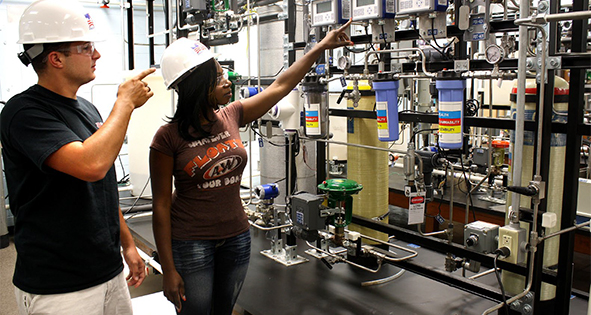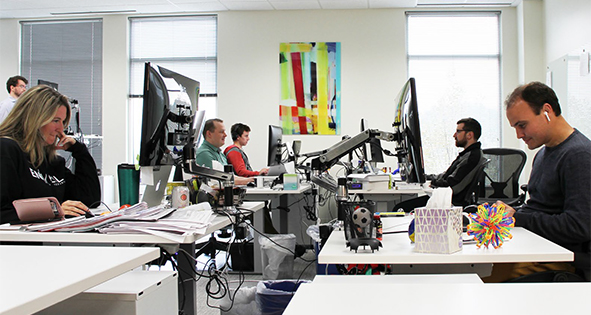Louisiana- Opportunities Abound
01 May, 2016
Update by Louisiana Economic Development (LED) and Don Pierson, the new LED Secretary
Q -What is the current “state of the state?”
A-Louisiana has experienced eight consecutive years of in-migration, with more people moving into the state than moving out, and this positive trend follows a quarter-century in which the reverse was true. LED has been very active in focusing the state on the retention and expansion of our existing employers – economic driver companies as well as small businesses – while attracting new investment from out-of-state and overseas in key industries.
Q-What are specific goals Louisiana is trying to accomplish in the short term and long term?
A-Don Pierson and Governor Edwards are emphasizing many programs that can help our growing small businesses access opportunities to work with larger economic driver companies. We’re helping them to participate in LED programs such as our Economic Gardening Initiative and CEO Roundtables, to stimulate the growth of small businesses, who represent 97 percent of our state’s employers and more than half of Louisiana’s private-sector employment. The key industries we’re focusing on are Advanced Manufacturing, Aerospace, Agribusiness, Automotive, Energy, Entertainment, Process Industries, Software Development, and Water Management.
Of course, there are many subsets of those sectors, and we’re working hard to synchronize the attraction of new investment (such as the many digital media and software development firms we’ve attracted to the state in recent years) with expansions of existing employers.
Over the past decade, Louisiana has attracted $75 billion in capital investment and more than 105,000 jobs associated with LED economic development projects. Through a rapidly expanding inventory of shovel-ready LED Certified Sites and competitive economic development incentives, we’re poised to continue our momentum.
Q-What are the biggest challenges you see for Louisiana in terms of economic development and growth?
A-Global investors are still learning about Louisiana, and they don’t realize just how much we have to offer: the most Class I railways in America, the greatest interstate and intrastate pipeline density in the U.S., and one of the strongest deepwater and inland port systems to be found anywhere in the world, including the largest port by tonnage in the Western Hemisphere.
Q-What are the most recent success stories in terms of economic development?
A-We recently broke ground on a new mixed-use technology park across from CenturyLink’s global headquarters in Monroe called Century Village. Anchored by IBM’s Application Development and Innovation Center, this 88-acre development will include office, commercial, residential and recreational facilities. We’ve twice developed corporate headquarters expansion and retention projects with CenturyLink. They just opened a 300,000 s.f. Technology Center of Excellence in Monroe that increased their corporate headquarters facilities footprint by more than 80 percent. Along with that growth, we attracted interest from IBM – which has CenturyLink as a major customer – in locating a second technology center in Monroe, adding more than 800 new direct and indirect jobs.
Our system of more than two dozen ports with world-class logistics have attracted major capital investment projects to our state: Nucor’s $750 million direct reduced iron mill in St. James Parish; Yuhuang Chemical’s $1.85 billion methanol complex and Formosa Petroleum’s proposed $9.4 billion chemical complex in the same parish; Shell Chemical just announced a $700 million chemical plant expansion in Geismar; and Incitec Pivot Limited’s Dyno Nobel subsidiary is completing a $1.025 billion ammonia plant this year with Cornerstone Chemical Company in Jefferson Parish.
The strength of our workforce programs and Louisiana’s strategic positioning as an energy state helped attract Benteler Steel/Tube’s $975 million seamless steel tube mill and steel mill project to The Port of Caddo-Bossier in Shreveport. For that project and the $8.1 billion ethane cracker and chemical complex being built by Sasol Ltd. in Southwest Louisiana, the Louisiana has built a pair of approximately $20 million advanced manufacturing training centers.
Q-Is the state providing significant incentives for businesses to locate there?
A-We offer competitive incentives to attract companies that are making major new investments, retaining workforce and creating new jobs. Among our incentives is the Industrial Tax Exemption Program that abates property taxes for up to 10 years on new capital investments in the manufacturing sector. We offer a Quality Jobs Program that provides payroll rebates for up to 10 years (at a rate of 5 percent to 6 percent) and either a sales and use tax rebate or an investment tax credit that can be used on a one-time basis. The Digital Interactive Media and Software Development Incentive offers up to a 25 percent tax credit on qualified production expenses and up to a 35 percent payroll tax credit on qualified in-state labor.
A-Where are the areas of greatest growth within the state in terms of industries and location?
A-From a capital investment perspective, Southwest Louisiana and the River Parishes between Baton Rouge and New Orleans are seeing the most significant growth. Louisiana is at the epicenter of the nation’s natural gas pipeline production and distribution network with outstanding multi-modal shipping options.
The Southwest Region is home to North America’s LNG, or liquefied natural gas, industry that is emerging as a major supplier of power providers and other heavy users of natural gas in overseas markets. Cheniere Energy is completing an approximately $20 billion investment in Cameron Parish below Lake Charles; Sempra Energy and its international partners are completing another LNG facility in Cameron Parish with a total investment of approximately $10 billion. Southwest Louisiana also is a major chemical and refining center. The areas of strongest technology growth are New Orleans
Q-How is the state dealing with the need for a well-educated and trained workforce?
A-LED FastStart is our most notable, comprehensive workforce solutions program for companies that need to rapidly ramp-up a project workforce. For the past six years, FastStart has ranked as the No. 1 state workforce training program in the U.S. The program manages job recruitment, screening, training and orientation in a highly customized fashion by getting to know the culture of each employer. We’ve also added new manufacturing certifications in community colleges that fast-track a student’s ability to get a new manufacturing job, along with a dual-enrollment certification at the high school level that enables a secondary student to graduate with manufacturing credentials needed for a job. One of the great tools that grew out of our LED FastStart work is LouisianaJobConnection.com which helps match companies and job seekers.
Q-What are your greatest assets at this time?
A-In addition to our infrastructure and programs mentioned, Louisiana has some unique assets such as major military installations including Barksdale Air Force Base in the Shreveport-Bossier City area. Northwest Louisiana has especially benefited from this base where we’re developing the National Cyber Research Park that includes the Cyber Innovation Center and the CSRA technology center (800 jobs in software and IT).
Fort Polk is home to approximately 10,000 military and civilian personnel. Its annual economic impact in the state is $1.7 billion. Additionally, former Air Force base, England Park has been converted into an international airport serving Fort Polk. Outside New Orleans, you’ll find the Naval Air Station Joint Reserve Base in Belle Chasse. That base supports 3,500 jobs and more than $527 million economic output.
Additionally, we have one of the largest manufacturing complexes in the world at NASA’s Michoud Assembly Facility in eastern New Orleans. In Southwest Louisiana, Chennault International Airport has become a leading MRO – or Maintenance Repair Overhaul – center for servicing military and commercial aircraft.
Q-Are there special initiatives or innovative programs that are making a difference within the state in terms of economic development?
A-Integrating developing software technology projects with higher education is critical. In recent years, we’ve committed approximately $40 million to targeted enhancements of curricula, faculty and programs in computer science and related STEM fields, programs that can truly raise the bar for Louisiana universities in providing a workforce for the future. These initiatives have linked businesses directly to institutions throughout the state.
We’ve also completed a Master Plan for International Commerce in Louisiana, created the Louisiana Board of International Commerce and really bolstered our network of trade and foreign direct investment representatives overseas in key global markets, as well as strengthening our internal team in LED’s Office of International Commerce.
Q-What are the lifestyle benefits of locating to Louisiana?
A-According to a 2014 research study from Harvard University and the University of British Columbia, Louisiana was home to the Top 5 happiest cities and six of the eight happiest cities in the U.S. We think that’s because we offer great economic opportunity here, but we also offer a great lifestyle with recreational and outdoor activities, such as fishing, hunting, birding, hiking, boating and more. And our food, music and festival culture is world-renowned.
For more information:
Side Note 1
Update Southwest Louisiana
It may seem odd, but multi-million dollar development projects in Southwest Louisiana do not get front page billing or lead broadcast news within local media outlets.
The reason is because of a constant stream of multi-billion dollar projects that total $97 billion in the five parish Imperial Calcasieu area that is boarded by Texas to the west, the Bayou State’s Acadiana region to the east and the Gulf of Mexico to the south.
“This area of Louisiana is a wonderful place to live and grow a business. Our government and business community works to make sure developers and businesses of all sizes are provided what they need to be successful,” said George Swift, President and CEO of the Southwest Louisiana Economic Development Alliance (SWLA Alliance) in based in Lake Charles.
Liquid natural gas (LNG) and petrochemicals drive the area’s economy and companies like Cheniere Energy, SASOL, Axiall/Lotte Chemical, Cameron LNG, Lake Charles LNG, Magnolia LNG, Live Oak LNG, Venture Global, are just a few of companies that have announced billion dollar investments in the area.
According to the SWLA Alliance, 64,521 jobs will have been created when construction of all projects are completed. Afterwards, 19,874 new permanent positions will have been generated.
What has driven the growth?
Simply put, pipe infrastructure and access to a large body of water
Southwest Louisiana is home to one of the most extensive industrial piping systems in America and it services companies from the gulf coast to points across the country.
The Port of Lake Charles is a little over 30 miles from the Gulf of Mexico. It is ranked as the 11 th largest maritime facility in America. It’s strength is bolstered by the Calcasieu River Ship Channel were many of the LNG and petrochemical companies are operating.
“The Calcasieu Ship Channel drives Southwest Louisiana’s oil, gas and chemical industries. Which means it drives Southwest Louisiana’s economy,” said Bill Rase, Executive Director at the Port of Lake Charles. “As a result of the channel, economic forecasts show that the LNG and petrochemical industries will substantially grow, generating significant impacts locally, regionally and nationally by 2023.”
Side Note 2
North Louisiana
North Louisiana supports a growing technology corridor, anchored by three of the largest IT companies in America: CenturyLink (Fortune 168), IBM (Fortune 24) and Computer Science Corp (Fortune 229). In the last few years, these IT companies created nearly 2,000 new technology jobs in North Louisiana.
In 2015, CenturyLink opened a 300,000 square foot Technology Center of Excellence at its corporate headquarters in Monroe, LA, creating 800 new technology jobs. CSC located an Integrated Technology Center in Bossier City, LA creating 800 new technology jobs in 2014. IBM broke ground on March 31, 2016 on its new 400-job Application Development and Innovation Center in Monroe, LA.
A five-year strategic plan for the region, developed by North Louisiana Economic Partnership (NLEP), identified IT and Professional Services as a target sector. By supporting and growing this sector, NLEP fosters the region’s transition to a knowledge-based economy and capitalizes on the momentum from recent IT announcements and CenturyLink’s growth. The IT sector in North Louisiana reinforces the region’s innovation assets, including 11 colleges and universities and new research business parks such as National Cyber Research Park in Bossier City, LA and Louisiana Tech University’s Enterprise Campus in Ruston, LA.
The recent expansion of our IT sector necessitated a comprehensive and coordinated workforce recruitment effort. It is critical that potential recruits perceive our region as a good place to live, work and play. A public-private coalition led by NLEP engaged a national place-branding firm to rebrand the area in order to recruit new technology workers and to retain the existing knowledge-based workforce.
Related Posts
-

Business Starts Here
-

TEXAS ENTERS 2021 AS WORLD’S 9TH LARGEST ECONOMY BY GDP
-

CALIFORNIA: 5TH LARGEST ECONOMY IN THE WORLD
-

MINNESOTA: FIRST IN FIVE-YEAR BUSINESS SURVIVAL RATE
-

CANADA: Alberta. More Open Than Ever
-

KENTUCKY: The Bluegrass State Is The Right Place To Grow Your Business
-

TENNESSEE: Great Brands Deserve the Great State of Tennessee
-

LOUISIANA: Custom Workforce for Expanding
-

MARYLAND: Home of Innovators
-

MAINE: Yankee Ingenuity









